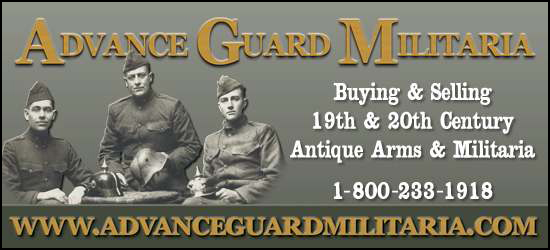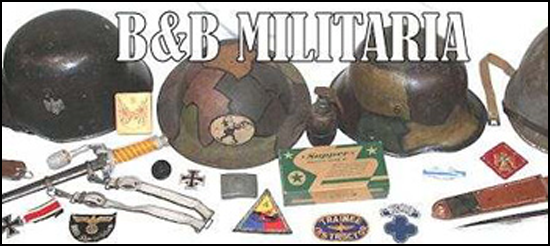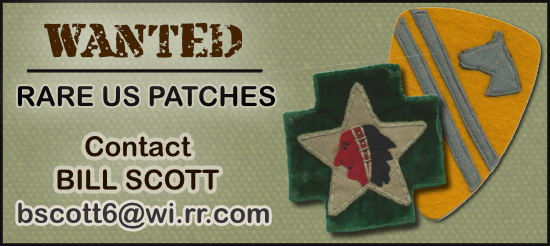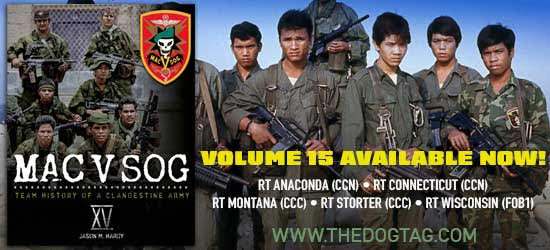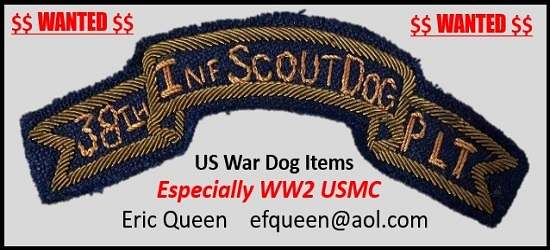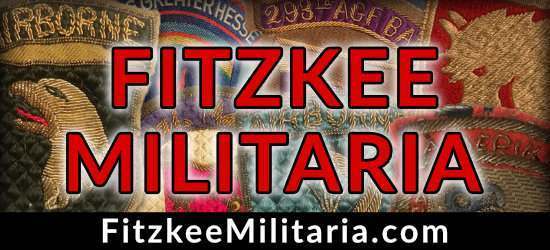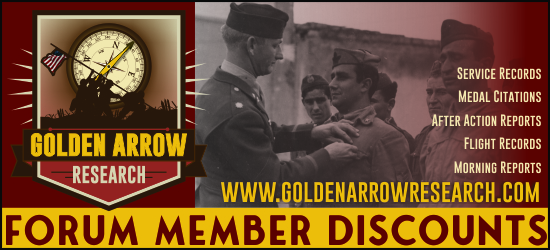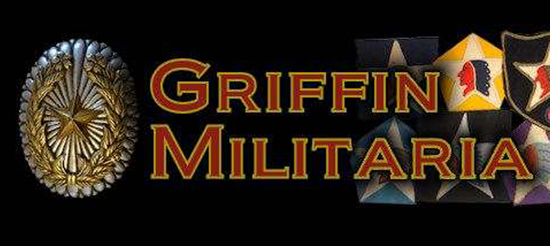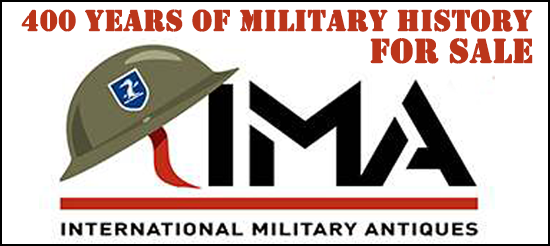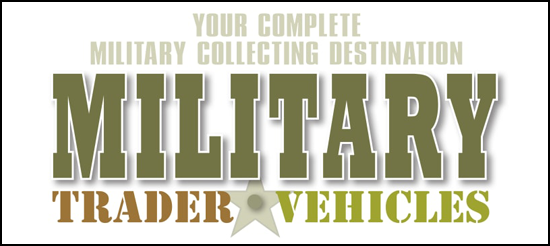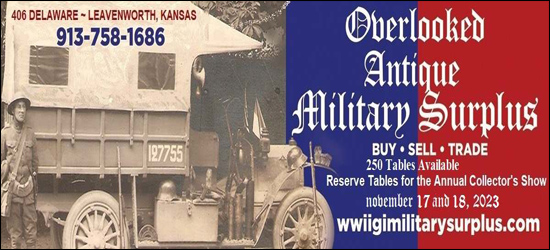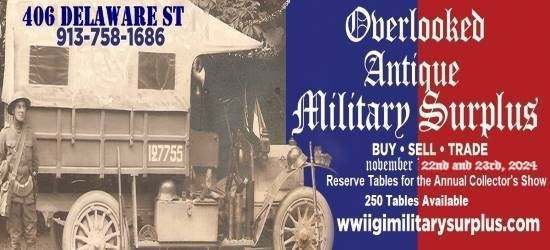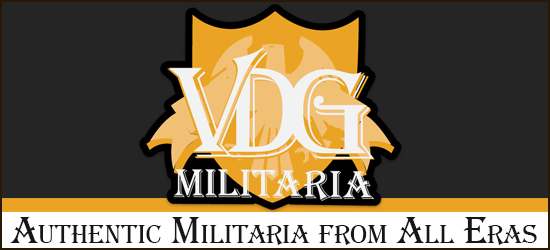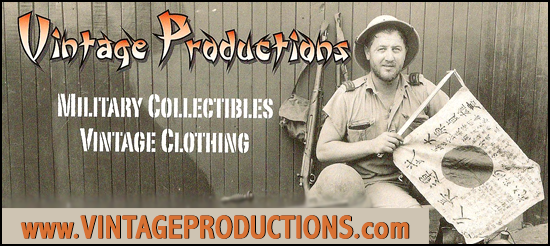-
Donate
Type donation amount in box below.
IMPORTANT! If you donate via PayPal using an e-mail address different than the one you are currently using on USMF and would like a 2024 Donor Icon added to your account, you MUST CONTACT vintageproductions or stratasfan and let them know what email address was used for the donation.
Thank you for supporting USMF.
Donate Sidebar by DevFuse -
Recent Posts
-

By atb · Posted
Here are the three that I have acquired, is on an ID'd uniform. -

-
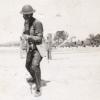
-

By mikie · Posted
I just saw this in the news. I hope the link works. https://www.yahoo.com/lifestyle/24-old-woman-gets-stranded-195050946.html mikie -

By Niemannnnn · Posted
Die ersten gefangenen Amerikaner” Photograph shows the first American prisoners of war behind enemy lines in Coincourt, France, surrounded by German soldiers after being captured in Bathelémont. Citation: Die ersten gefangenen Amerikaner. , 1917. [Germany: Publisher not identified] Photograph. https://www.loc.gov/item/2018646053/. : POWs belonged to Company F 16th US Infantry Regiment captured 2 November 1917 Ref: https://department.va.gov/history/featured-stories/wwi-pows/ https://sos.oregon.gov/archives/exhibits/ww1/Pages/active-pow.aspx from (Legacy Preservation Library, Forward-March, Page 127a) Credit from https://commons.wikimedia.org/wiki/File:Americans_in_German_prison_camp._A_group_of_American_prisoners_in_a_German_prison_camp_listening_at_._._._-_NARA_-_533544.tif?page=1 Orginally published in July 1927 American Legion magazine page 57. As Noted before Fred Chitty wrote concerning this picture:”.. The picture on page 57 I have seen before. I can not say where it was taken, but it seems to me it might have been taken in Rastatt, Germany, where was located a prison camp for Americans. I can recognize several of the faces in the picture but after nine years, names are dim. Of one I am sure. The sixth from the right with the German hat on is a fellow named Miller who was in Company D, i02d Infantry, 26th Division, whose home was in New Haven, Connecticut. "These pictures are very interesting and I hope to see more of the same type.” A HINT has been given in the foregoing paragraphs as to where the picture which appeared on page 57 of the July Monthly was taken. The Company Clerk is glad to report that from letters received, it is definitely known the picture was snapped in the prison camp for American soldiers at Rastatt, Germany. While the varied garb of the prisoners misled him to believe that the men shown represented most of the Allied forces, all of them are Americans. This fact was made known by Legionnaire Charles W. Knowlton of Philadelphia, formerly of Company D. 165th Infantry, 42d Division, who is in the group. John J. (Jack) Payne, a member of Capitol Post, Topeka, Kansas, who fought with Company K, 18th Infantry. First Division, was also with this bunch of Americans. But most surprising of all, we got a letter from Charles Morris of Chicago, who is the colored soldier in the center of the picture. Morris was a private first class with Company B, 370th Infantry, 93d Division, and was taken prisoner on August 8, 1918, in the Argonne. More detailed information regarding this picture will appear in Then and Now in the October Monthly. Ref:P.58; 60-61 The American Legion Monthly [Volume 3, No. 3 (September 1927)] “WHEN we made up our I. and 0. report for the September Monthly, we gave a hint regarding the unidentified picture of American prisoners of war which was used in Then and Now on page 57 of the July Monthly. [For the uninitiated, "I. and 0." means Intelligence and Operations. Yep! We were in the Intelligence Service.] We promised more information regarding this interesting picture which Legionnaire James R. Vance purchased for two packages of cigarettes from a barber in a Holland fishing village back in 1919. So let's go! Get set for the denouement: "Referring to the picture of American prisoners on page 57 in the July Monthly," says Legionnaire Charles W. Knowlton of Philadelphia, Pennsylvania, in his letter to the Company Clerk, "will say that I can identify and explain the picture as I am a member of the group. The picture was taken at Camp Rastatt in Germany by a German army photographer. The camp contained about one thousand American prisoners at the time. All of the men in the picture are Americans even though the clothes they wear might indicate otherwise. The occasion for the picture and the grins on the men are accounted for as follows: "A German staff officer was making an inspection of the American prison camps and pictures were being taken to be distributed as propaganda. While talking to the group in the picture, the officer spied the tall colored American soldier and started to question him on various subjects. He asked him how he liked the German gas at the front and what effect it had on him, and the American replied, 'It didn't bother me any, sah, but it rusted all the buttons on my coat!' Hence the laughter in the group. "The greater portion of the men in the group were from the Yankee Division, (26th of New England), who were captured at Seicheprey, a couple were engineers taken at Cantigny, a few Marines, and the two at the extreme left were American aviators. I served with Company D, 165th Infantry, (old 69th National Guard of New York), of the Rainbow (43d) Division, and was taken prisoner in the Baccarat sector in Lorraine on May 6, 1918. I was returned to France in December, 1918. "A few months after this picture was taken, the Red Cross sent us new clothes and food and we made quite a different appearance. We certainly looked and felt like bums even if the picture does register happiness. "I have never come in contact with any of the boys in the picture since returning from overseas and I would be extremely pleased if any more should write to identify the picture, if my address is given to them. I am the seventh man from the right of the picture, without any hat on." THEN our friend, "Red" Ryanpardon us, Department Adjutant Ernest A. Ryan, — of Topeka, Kansas, wrote to tell us that when Legionnaire Leslie E. Edmonds of the Topeka Capital saw this picture in Then and Now in the Monthly, he recognized one of the men, the fourth one from the right, sizing up the photographer, as Jack (John J.) Payne, Service Officer of Capitol Post, Topeka. Edmonds got busy, wrote a feature story and ran it with a reproduction of the picture in his paper. We are going to reprint, with permission, part of Edmonds's account : "In the July number of the American Legion magazine the editor of the 'Then and Now' section asks for identification of a photograph of Allied prisoners of the German Army. It is the picture reprinted here. With its reprinting, however, there is no longer need for its identification. Hundreds of Topeka Legionnaires have lifted it from an unnamed and unknown bit of wartime photography by discovering a speaking likeness of John J. Payne, far better known as Jack, First Division veteran, proprietor of the Keystone Dairy, resident of 808 Lane Street and member of Capitol Post of the Legion. "Before the picture was taken — and since, — Jack Payne's Irish heart, so set on its owner's fighting that it caused him to enlist, the day war was declared, must have beaten faster many times. Jack's story may not be unique but it is a war epic that only the chance printing of his picture by a veterans' magazine has made possible the telling. "It includes his tour of duty with the First Division, his promotion from private to sergeant in an organization that still held jealously to the principle of high efficiency in the non-commissioned officer, his experiences in battles and raids, his capture by a crack Prussian raiding company after a veritable hell of shell fire, his dangerous tilts with officers of the German Army, his forced migration across the length and breadth of Germany as an exhibit, his devoted services to buddies in the prisoners' camp, his calm self-repatriation by way of Switzerland after the Armistice, his latter service with his old outfit in the Army of Occupation and his return to the comparatively calm and peaceful milk industry. Payne won't talk much about himself and the war except when some comrade induces him to reminisce." EDMONDS goes on to tell that Payne enlisted at Jefferson Barracks, Missouri, on April 6, 191 7, and just a little more than two months later was part of a gunsquad on a transport heading for France. Landing in St. Nazaire, training in the Gondrecourt area, the division was in line in August, with Payne as a platoon sergeant. One morning in March, 1918, his outfit was surrounded by an enemy box barrage and by noon he was a prisoner of the Germans. A raid which penetrated the gap between the First Division and a French unit on its right did the work. Seventeen prisoners, including Sergeant Payne, the highest ranking man of the group, were taken, although the Prussians left fifteen of their number dead on the field. Edmonds continues: "Once behind the enemy lines many of the prisoners lost their shoes and much of their other equipment. The Germans had been too long without new issue and the dubbin-soaked hobnails were a God-send. But not Jack Payne! There and then began his career of rebellion that might have cost him plenty. The blonde soldier in feldgrau who gestured his desire to possess himself of Jack's footwear was answered by: " 'No, by God, you can't have a non-commissioned officer's shoes.' Probably Heinie didn't grasp all that but a fighting Irishman's eyes speak a common language. So Jack kept his shoes. "Well to the rear, the party was halted for examination by the Intelligence branch of the corps staff. Jack's chevrons won him instant attention. . . . Jack broke down at once and promised to tell all — where the Americans were located, what time chow was delivered, where the defense weak points were, when the next relief was expected. The German representative of All-highest fairly beamed. Jack was taken to private quarters. An orderly brought tea and sandwiches. ... A yet-higher officer strode in. . . . He read the first page of Payne's story and then glanced through the latter pages and with an oath that would have been good in any language tore the entire report crossways. . . . Jack hadn't told a word of truth in two hours and the only honest thing he had done was to eat sandwiches and drink tea. . . . "Late that night Payne in company with fellow prisoners was placed aboard a train en route to Berlin. Four days later the handsome American non-com was parading 'Unter den Linden' which had been his objective all along. To be sure the parade was under slightly different auspices than he had planned it but for hours the Americans were exhibited to hordes of big and little krauteaters. During his captivity, Payne was paraded in Berlin four times. Seemingly the Germans desired to make by frequent reappearance a semblance of much prisoner-taking. "Most of his captivity was spent at the prison camp for Americans at Rastatt. Here Payne had his biggest and probably most dangerous thrill. The camp was commanded by Captain Rudolph von Tosher, who promptly attempted to put all prisoners to work. Now Payne had found out that noncom prisoners were not supposed to do manual labor under international war agreements. And no work would he do. "He was obdurate and even an appearance of Captain von Tosher, personal representative of Gott in those parts, had no effect. . . . Payne's time was left free to give to his fellows. To help the wounded and sick, to pay America's last respects to those who died in prison. He was given a 'Feldwebel' brassard and from that hour his persecution ceased. "It was this same von Tosher who is the center of the group of prisoners in the picture used in the Monthly. He is asking questions of a big colored soldier from the 92d Division. The whole proceeding was calculated to put the prisoners in cheerful humor so that the picture could be used to show the light lot of prisoners of war in German hands. "The coming of the Armistice was felt by the group of American prisoners. Days before November 11th they knew the end was near. The people in southern Germany were through and admitted it. 'The Prussians, of course,' says Payne, 'weren't whipped then and they aren't now but the other German peoples had had enough.' With the Armistice there was not even a pretense of looking out for the prisoners. Payne stayed a week to help sick comrades and buried two of them who could not survive even with the tonic of victory. Then he entrained for Berne, Switzerland, and eventually rejoined his division as it marched into Germany.'' Ref:Pp.58; 84-85 The American Legion Monthly [Volume 3, No. 4 (October 1927)] Picture taken at Rastatt prison camp, Baden, Germany Sept. 27th, 1918, standing left to right: William Nelson Wenatchee, Wash., Edward Roberts (blind) Iroquoi, S.Dakota William Cleveland, Baselton, Ga., Sitting left to right: Raymond Carlisle, Lebanon, N.H., Robert Caballero New Orleans La Frank Calabraise, Phil. Pa, Note on back of original photograph in prisoner's handwriting: "Oh, joy, Ho, boy, where to we go from here?" Credit: https://www.loc.gov/pictures/resource/anrc.02698/ -
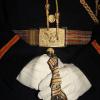
By Jamecharles · Posted
That's a great uniform set just WOW GS -
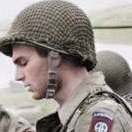
By Gear Fanatic · Posted
The 13th ABN one is cool always thought those “ghost army” patches were cool, recently picked up a 14th army one for cheap. Nice finds! -

By Spy vs Spy · Posted
Cool piece. I’ll bet there ain’t many of those around. -

By GAZOO · Posted
10 year old thread and I found something New ☺️ While doing some research on a Navy MIA/KIA Pilot I found this signal Mirror in his personnel belongings, Family saved everything Anyway while doing the research part of this Group I found this thread and NOTICED this MIRROR is a bit different from the ESM/1 posted at the start of thread I noticed this packaging is not shown or referenced SO Here is the PACKAGING MARKED AS ESM/1 and the MIRROR IS MARKED Pat. Applied for, Unlike the one posted at the start Pilot was MIA / KIA Aug 45 Anyway for future references I will include the photos of the what must be an Early Military Packaging for this PAT APPLIED FOR Variation NOTE this Mirror has Pat Applied for Printed at the bottom and NO SPEC NO. PACKAGE MARKED ESM/1 -

By mikie · Posted
If you opened a BBQ restaurant using those to cook on, you could call it Ken’s Grille Grill. mikie
-
-
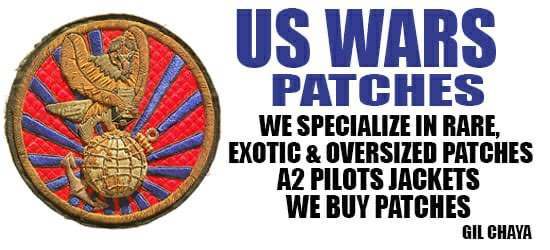
-

-
* While this forum is partially supported by our advertisers, we make no claim nor endorsement of authenticity of the products which these advertisers sell. If you have an issue with any advertiser, please take it up with them and not with the owner or staff of this forum.




